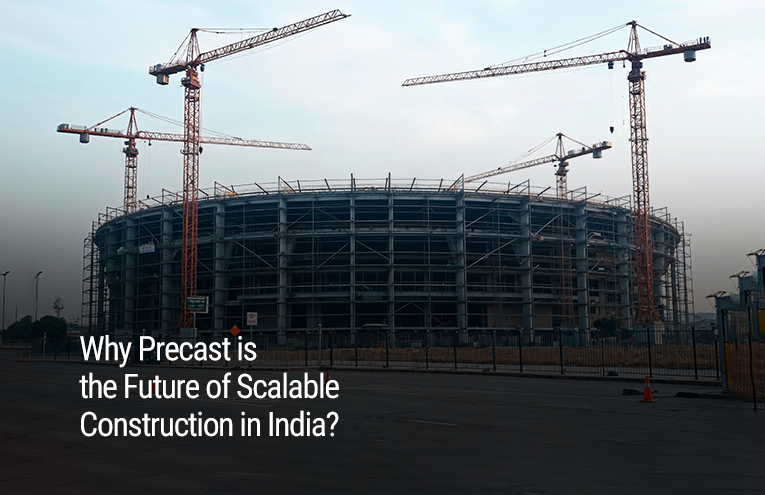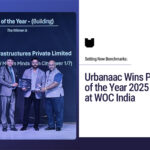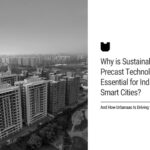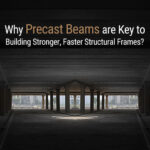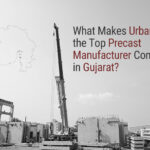India’s booming economy and rapid development have created out of the ordinary demand for modern, durable, and affordable infrastructure. From housing to commercial complexes and industrial projects, the traditional construction methods, often plagued by delays, quality conflicts, and environmental concerns, are struggling to keep pace. This is where precast technology emerges not just as an alternative, but as the quintessential solution for scalable, efficient, and sustainable development. Precast concrete, which involves manufacturing building components in a controlled factory environment and then assembling them on-site, is poised to transform India’s construction landscape.
The Foundation of Efficiency: Faster Execution and Unmatched Quality
One of the most significant benefits of precast technology is its ability to significantly reduce project timelines. Unlike traditional methods, where construction is a sequential process on-site, precast manufacturing allows for concurrent activities. Foundation work can be done at the project site while precast elements like walls, beams, and slabs are being produced simultaneously in the factory. This parallel workflow can lead to a project completion rate that is up to 50% faster than traditional methods, which is critical for meeting ambitious deadlines and managing large-scale infrastructure goals.
Furthermore, the controlled factory environment ensures superior quality and precision. The manufacturing process is ensured by the use of automated machinery and standardized molds, which guarantee uniformity in dimensions and composition. Each precast element undergoes stringent quality control tests before it leaves the facility. This meticulous attention to detail results in components with high strength, durability, and a flawless finish, significantly reducing the need for on-site rework and ensuring a more reliable and long-lasting structure. This consistency and speed make precast an ideal choice for scalable construction.
Building Greener, Building Smarter: The Sustainability Advantage
In an era of growing environmental consciousness, the sustainable construction practices offered by precast are more relevant than ever. Traditional construction sites generate a significant amount of waste, noise, and air pollution. Precast manufacturing, on the other hand, minimizes material waste as excess concrete and other materials can be recycled and reused within the factory. The process also requires less water and energy compared to on-site concrete mixing and curing.
By shifting a large part of the work to a controlled indoor setting, precast technology also results in cleaner and safer construction sites. There is a substantial reduction in on-site noise and dust pollution, making projects less disruptive to surrounding communities. The use of precast elements also contributes to creating more energy-efficient buildings, as they provide superior thermal insulation, which can reduce the long-term energy consumption for heating and cooling. This focus on sustainability positions precast as a responsible and forward-thinking solution for India’s future.
A Blueprint for Prosperity: Cost-Effectiveness and Safety
The cost-effectiveness of precast construction is a multifaceted benefit. While the initial investment in manufacturing may seem high, the long-term savings are considerable. The accelerated project timelines lead to reduced labor costs, less reliance on a large on-site workforce, and lower overheads associated with project delays. A quicker completion also means a faster return on investment for developers and investors. The durability and high quality of precast structures also lead to lower maintenance costs over the lifetime of the building.
From a safety perspective, precast technology significantly de-risks the construction site. The majority of the work, including molding and curing, is performed in a safe, controlled factory environment, reducing the number of on-site workers and the associated risks of accidents and injuries. With fewer workers operating at height and less raw material handling, the overall safety profile of a project is greatly enhanced. This not only protects human lives but also reduces project liabilities and insurance costs.
In conclusion, precast technology offers a compelling solution to India’s construction challenges. By combining unparalleled faster execution, superior quality, and a clear commitment to sustainable construction and cost-effectiveness, it provides a robust and scalable blueprint for the future. Companies like Urbanaac are at the forefront of this transformation, proving that building faster, smarter, and greener is not just a possibility, but a reality that will define India’s infrastructural growth for decades to come.


